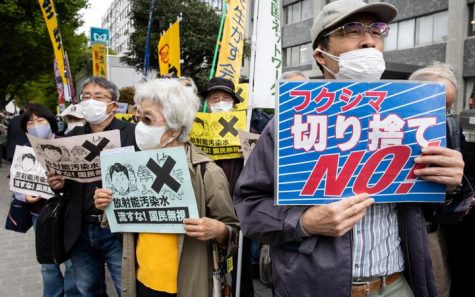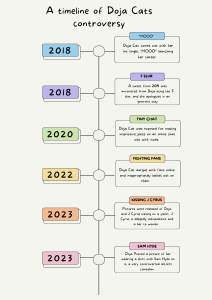Japan’s Nuclear Waste Dump Plans Cause Global Concern
April 23, 2021
On March 11, 2011 an earthquake struck Japan, rating a 9 on the magnitude scale– the strongest earthquake on record for the country. The quake rippled through the Pacific Ocean, causing a massive tsunami, devastating the country physically and economically. Despite the despair caused from the loss of property and lives, a new, radioactive problem surfaced.
In the long, painful days of recovery following the natural disaster, Japan learned of another threat: a nuclear disaster was on the verge of erupting. The Fukushima Daiichi Nuclear Power Plant’s heating and cooling system malfunctioned, causing the reactors to explode in the days to come, leaking hazardous waste and radiation into the environment.
After the accident, the Japanese government contained the radioactive water from the reactor leak in large tanks by the site in order to protect the citizens and environment from its harmful effects.
Fast forward to October 16, 2020, at which point Japanese authorities have decided to pour millions of gallons of nuclear waste water into the Pacific Ocean because they’re running out of storage and the plant is being decommissioned.
Jennifer Morgan, Executive Director at Greenpeace International, an environmental organization, is disgusted with this proposed “solution.” According to a press release from Greenpeace International, Morgan said, “In the 21st century, when the planet and in particular the world’s oceans are facing so many challenges and threats…it is an outrage that the Japanese government and TEPCO think they can justify the deliberate dumping of nuclear waste into the Pacific Ocean.”
This decision also violates Japan’s legal obligations to the United Nations Convention on the Law of the Sea, (UNCLOS) and directly threatens the health of all of its citizens.

The radioactive isotopes within the contaminants are what makes the waste so hazardous. Tritium, an isotope of Hydrogen, is extremely difficult to filter out of the water because it is part of the water molecules themselves. Other carcinogenic isotopes like carbon-14, cobalt-60, and strontium-90, are substantial problems because of their long half-lives– the time it takes for their radioactivity levels to go down 50%. Carbon-14’s half life, for example, is about 5,000 years.
This then raises the question: What are our alternatives?
The Department of Energy might be able to answer this question. On their website, they write, “According to consensus in the scientific community, geological repositories–which would store nuclear material deep within the earth’s surface in safe, scientifically proven locations–represent the safest and most cost-effective method for permanently disposing of spent nuclear fuel and high-level radioactive waste.”
These repositories would house the nuclear waste underground in sealed confinement areas until their potency decreases to a safe level, or new methods of sustainable disposal are discovered.
This plan will take time and effort to execute, though. Japan is eagerly trying to move forward with the plans to filter and dump the radioactive material, but not without great opposition. Local fishermen, citizens, and environmentalists all want to halt the decision until a more viable option is discovered.








